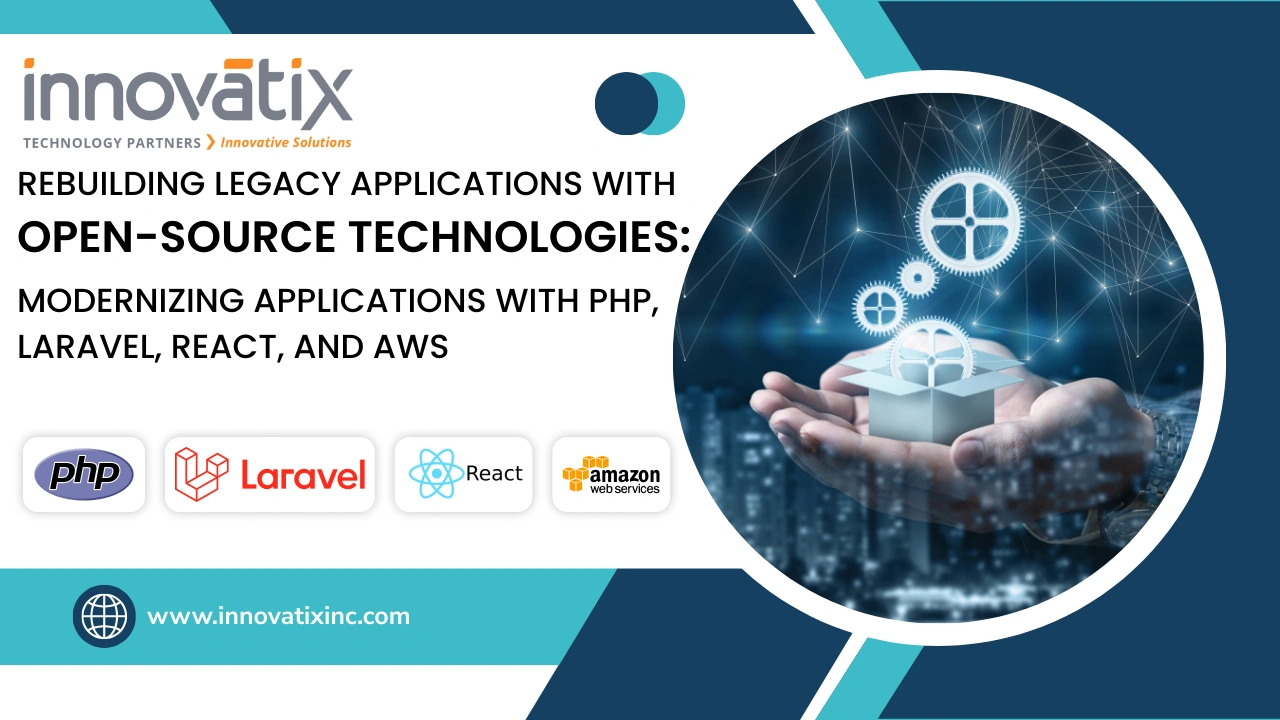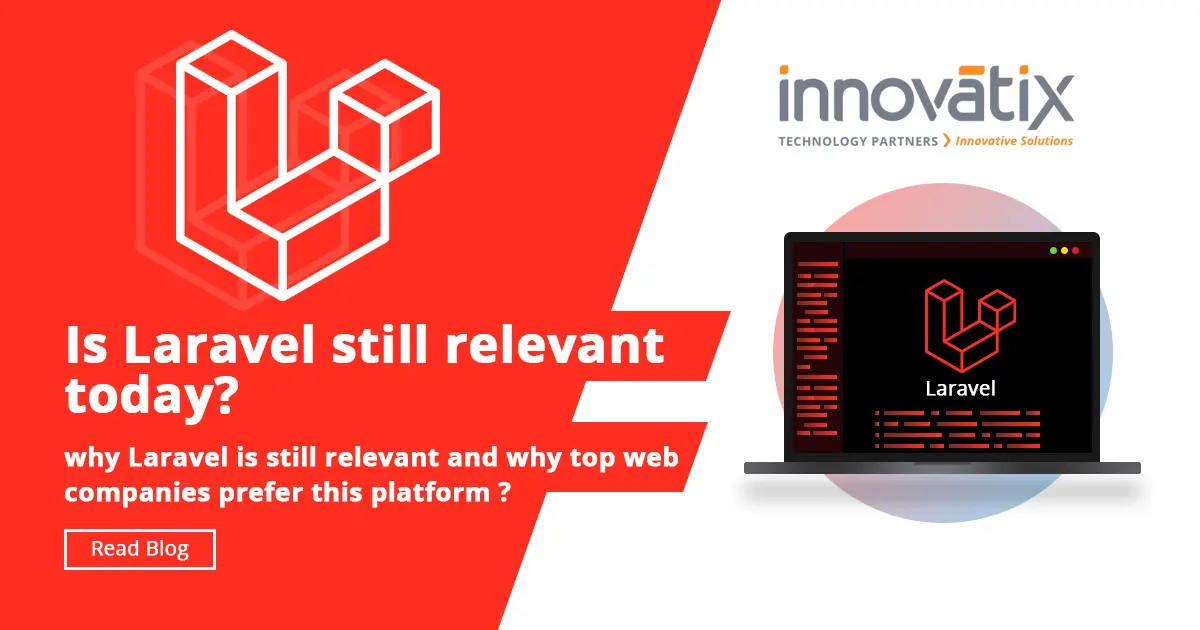Rebuilding Legacy Applications with Open-Source Technologies: Modernizing Applications with PHP, Laravel, React, and AWS
Businesses are under constant pressure to innovate and adapt to rapidly evolving customer expectations and market demands. However, many companies are held back by legacy applications built on outdated technologies that struggle to meet modern performance, scalability, and security requirements. These legacy systems, while critical to the organization’s day-to-day operations, often become liabilities as they hinder agility and growth. The solution? Modernizing these legacy applications by embracing cutting-edge open-source technologies such as PHP, Laravel, React, and AWS Cloud Architecture. These tools provide a flexible and cost-effective framework to breathe new life into outdated systems, transforming them into scalable, secure, and high-performing solutions ready for the future. In this blog, we will explore the reasons for modernizing legacy applications and dive deep into how PHP, Laravel, React, and AWS can be leveraged to successfully rebuild them. Why Modernize Legacy Applications? Modernizing legacy applications isn’t just about upgrading technology; it’s about future-proofing your business. Here’s why it’s critical to take the plunge into modernization: Modern applications are designed to handle increased workloads and fluctuating traffic more efficiently. Legacy systems, built during a time when user demands were lower, often choke under the weight of modern data and usage requirements. Today’s tools allow applications to scale dynamically, expanding their capacity during peak periods and contracting when demand is low, ensuring consistent performance while optimizing resource use. As cyber threats grow in sophistication, legacy systems are particularly vulnerable. Modern technologies and cloud platforms have built-in security features that continuously evolve to address the latest vulnerabilities. By modernizing, businesses can implement robust security measures like multi-factor authentication, encryption, and automated security patches, all of which protect sensitive data and reduce the risk of breaches. Legacy applications often struggle to meet the usability expectations of today’s users. Modernizing these systems provides an opportunity to offer a faster, more intuitive, and responsive user interface. Technologies like React bring sleek, dynamic, and engaging experiences to the frontend, improving customer satisfaction and engagement. Legacy systems are expensive to maintain, often requiring specialized skills and outdated infrastructure. In contrast, modern open-source technologies are supported by vibrant developer communities that continually provide updates, patches, and enhancements. This not only reduces maintenance costs but also ensures long-term sustainability as the system stays up-to-date with current trends. The Power of PHP and Laravel PHP has been a staple in web development for decades. It’s one of the most widely used programming languages for server-side development, powering millions of websites. Over the years, PHP has evolved significantly, with improvements in performance, security, and development practices. But it’s Laravel, a PHP-based framework, that has truly redefined how developers approach building modern web applications. 1. MVC Architecture for Organized Code Laravel follows the Model-View-Controller (MVC) architecture, which encourages a clear separation between business logic, user interface, and data management. This ensures that code remains organized, easy to maintain, and scalable. By keeping concerns separate, developers can update or expand different parts of the application independently, without disrupting the entire system. 2. Eloquent ORM for Simplified Database Interaction One of Laravel’s standout features is Eloquent ORM (Object-Relational Mapping), which simplifies database interactions. Eloquent allows developers to manipulate database records using PHP syntax rather than writing raw SQL queries. This abstraction makes database interactions faster to write, easier to read, and less prone to errors, improving overall development efficiency. 3. Blade Templating for Cleaner UI Code Laravel’s Blade templating engine is designed for building clean, reusable, and dynamic UI components. Blade’s syntax is simple and intuitive, allowing developers to embed PHP logic directly into HTML templates. With features like template inheritance and sections, Blade makes it easy to manage complex layouts while ensuring a modular and organized approach to building user interfaces. 4. Artisan CLI for Streamlining Development Laravel comes with Artisan, a powerful command-line interface (CLI) that simplifies common development tasks. Whether you need to generate boilerplate code, manage database migrations, or run scheduled jobs, Artisan makes it faster and more efficient to develop and maintain applications. This automation of repetitive tasks frees up developers to focus on more critical aspects of the project. The Benefits of React for Modern User Interfaces In today’s digital environment, the user experience is a key differentiator between successful and underperforming applications. React, a JavaScript library for building user interfaces, is a powerful tool for delivering fast, interactive, and dynamic frontend experiences. 1. Virtual DOM for Superior Performance React’s virtual DOM enables it to update and render only the necessary components of the user interface, rather than re-rendering the entire page. This optimization significantly enhances performance, particularly for applications that require frequent updates, such as dashboards or data-heavy platforms. Faster rendering times translate directly into better user experiences, as users encounter fewer delays or interruptions. 2. Component-Based Architecture for Reusability One of the most compelling reasons to use React is its component-based architecture. In React, the user interface is broken down into small, reusable components, each responsible for rendering a specific part of the UI. These components can be reused across different parts of the application, reducing the amount of redundant code and making maintenance easier. This modular approach also improves collaboration among development teams, as individual components can be worked on independently. 3. JSX for Intuitive Code Another feature that sets React apart is JSX (JavaScript XML). It allows developers to write HTML-like code directly within JavaScript, making it easier to create dynamic web pages. This integration of HTML and JavaScript in a single file simplifies the development process and enhances code readability, allowing developers to more quickly identify issues and implement changes. 4. Expansive Ecosystem for Seamless Integration React boasts a large ecosystem of third-party libraries and tools that can be easily integrated into development workflows. Whether you need state management solutions like Redux or routing libraries like React Router, React’s ecosystem provides developers with all the tools needed to build complex and highly interactive web applications. Leveraging AWS Cloud Architecture for Scalability and Reliability Once a legacy application’s frontend and backend are modernized, the next crucial step






